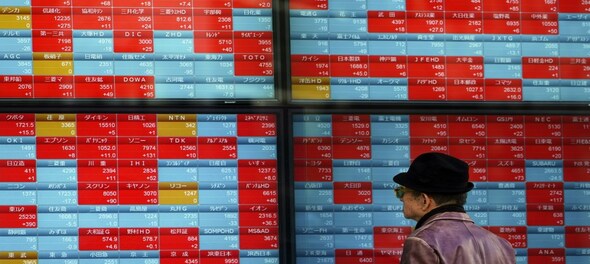
Benchmark German debt yields climbed above 0 percent Wednesday for the first time since the pandemic started as investors are betting on the central banks to cut back on the money infusion into the economy in the wake of the pandemic. The rate on 10-year government bonds rose to 0.011 percent, a level that was last seen in May 2019. The rise is in line with a similar trend seen in US bond yields, which have also risen to a 2-year high.
Negative yields had resulted in a bizarre situation where the lender would pay the borrower interest at maturity, instead of the other way round. In this case, investors in German government bonds were paying the government to borrow money from them.
In times of financial crises, central banks turn to the bond market to repair the economy. They buy government bonds in a big way, pushing bond prices higher, and at the same time, bond yields lower (bond prices and yields move in opposite directions). They lower the interest rates on loans and mortgages and thus increase the supply of money in the economy.
Also Read |
But as the economies arise out of the setbacks induced—by coronavirus in this case—consumer prices begin rising, partly due to excess cash. These rising prices, in turn, pull at the inflation. Which in the real world has risen to levels beyond what central banks desire. This rising inflation and booming labour market serve as a signal that central banks must take away the support they have lent to the economy.
Global economies are standing at the same step right now. The central banks seem to be on the verge of tightening or preparing to tighten the monetary policy in the face of rising inflation and booming labour market.
The inflation in Euro Zone had hit a new record high in December, raising questions about the accommodative stance of the European Central Bank. The headline inflation in Euro Zone came at 5 percent for December—the highest ever on record. It came on the heels of November’s 4.9 percent reading.
Following it, the ECB announced moderately slowing down the bond-buying program. But it kept the interest rate unchanged at -0.5 percent and ‘vowed’ to continue the ‘unprecedented monetary policy support.’
The ECB buys bonds worth $2.19 trillion in what it calls a Pandemic Emergency Purchase Programme (PEPP). The program is due to end in March 2022. But then it will shore up purchases under the Asset Purchase Programme (APP) to serve as a quantitative easing bridge as PEPP ends. It has been spending 20 billion euros in APP.
However, investors are now wagering on an interest hike in more than a decade.
What it means for the economy
Bond yields act as the doctor that tells all about the patient’s health -- in our case, a global economy coming out of the clutches of the pandemic-induced recession.
The bond market involves participants whose actions tell us what they think about the future of interest rates, inflation, and growth at large. While the signals aren’t perfect by any means, the bond market is too large to be ignored.
Rising bond yields mean investors are selling bonds wagering that interest rates will rise as inflation runs amok. It comes on the heels of the Federal Reserve intending to hike interest rates as soon as March 2022. And the Bank of England—the United Kingdom’s central bank—has already hiked the rate for the first time in three years in December 2021. The interest rate now stands at 0.25 percent, from 0.1 percent.
Earlier in December, ECB Governing Council member Klass Knot had said the apex bank will be ready to hike interest rates early in 2023 after ending the bond-buying program. However, he did say, “a lot will demand on how the economy will develop next year, a year is long.”
A year is indeed long, not so much for money markets, though. As per a Bloomberg report, they are already betting on a hike. On Monday, the markets priced in a 10 basis points hike in September. They later priced a 10-basis point hike in October and two similar hikes in 2023.
Analysts are of the same view. Gary Schlossberg of Wells Fargo Investment told CNBC-TV18 Wednesday, “there will be multiple rate hikes over the course of the year.”
So, while bond markets can be wrong, according to the larger consensus, they can gauge the market sentiment quite well.
What it means for stocks
The bread and butter of a sizeable portion of retail investors – the stock markets – depend on bond markets for a very important measure. Bond yields help investors decide the worth of stock.
How do you decide the worth of stock? One way is to compare the return of stock with a ‘risk-free rate,’ which you get by taking little to no risk. The more money you make by taking a little risk, the less attractive a stock becomes.
Yields on government securities act risk-free rate, because what are the chances of government bonds defaulting? So, if the returns on government bonds rise, stocks would become unattractive. And investors will choose a high return, low-risk investment option compared to a stock, which is risky in this case.
(Edited by : Santosh Nair)
First Published: Jan 19, 2022 2:19 PM IST
Check out our in-depth Market Coverage, Business News & get real-time Stock Market Updates on CNBC-TV18. Also, Watch our channels CNBC-TV18, CNBC Awaaz and CNBC Bajar Live on-the-go!


BJP's Hindi heartland dominance faces test in phase 3 polls
May 2, 2024 9:14 PM
Lok Sabha Election: Re-elections at a Ajmer booth after presiding officer misplaces register of voters
May 2, 2024 4:54 PM

